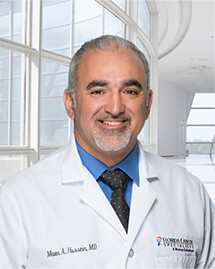Author(s): Michael J. Dickinson, M.B., B.S., D.Med.Sc., Carmelo Carlo-Stella, M.D., Franck Morschhauser, M.D., Ph.D., Emmanuel Bachy, M.D., Ph.D., Paolo Corradini, M.D., Gloria Iacoboni, M.D., Cyrus Khan, M.D., Tomasz Wróbel, M.D., Fritz Offner, M.D., Ph.D., Marek Trněný, M.D., Shang-Ju Wu, M.D., Ph.D., Guillaume Cartron, M.D., Ph.D., Mark Hertzberg, M.B., B.S., Ph.D., Anna Sureda, M.D., Ph.D., David Perez-Callejo, Ph.D., Linda Lundberg, Ph.D., James Relf, M.D., Mark Dixon, M.Sc., Emma Clark, M.Sc., Kathryn Humphrey, B.Sc., and Martin Hutchings, M.D., Ph.D.
Author Affiliations
From the Peter MacCallum Cancer Centre, Royal Melbourne Hospital, and the University of Melbourne, Melbourne, VIC (M.J.D.), and Prince of Wales Hospital and the University of New South Wales, Sydney (M. Hertzberg) — all in Australia; Humanitas University and Istituti di Ricovero e Cura a Carattere Scientifico (IRCCS) Humanitas Research Hospital (C.C.-S.), and Università degli Studi di Milano and Fondazione IRCCS Istituto Nazionale dei Tumori (P.C.) — all in Milan; Université de Lille, Centre Hospitalier Universitaire (CHU) Lille, Unité Labellisée de Recherche 7365, Groupe de Recherche sur les Formes Injectables et les Technologies Associées, Lille (F.M.), Centre Hospitalier Lyon Sud, Lyon (E.B.), and CHU de Montpellier, Centre National de la Recherche Scientifique, Unité Mixte de Recherche 5535, Montpellier (G.C.) — all in France; Vall d’Hebron University Hospital (G.I.) and Institut Català d’Oncologia Hospitalet, Institut d’Investigació Biomèdica de Bellvitge (IDIBELL), Universitat de Barcelona (A.S.) — both in Barcelona; the Allegheny Health Network Cancer Institute, Pittsburgh (C.K.); Uniwersytet Medyczny we Wrocławiu, Wroclaw, Poland (T.W.); Universitair Ziekenhuis Gent, Ghent, Belgium (F.O.); the First Faculty of Medicine, Charles University Hospital, Prague, Czech Republic (M.T.); National Taiwan University Hospital, Taipei (S.-J.W.); F. Hoffmann–La Roche, Basel, Switzerland (D.P.-C., L.L.); Roche Products, Welwyn Garden City, United Kingdom (J.R., M.D., E.C., K.H.); and Rigshospitalet, Copenhagen (M. Hutchings).
